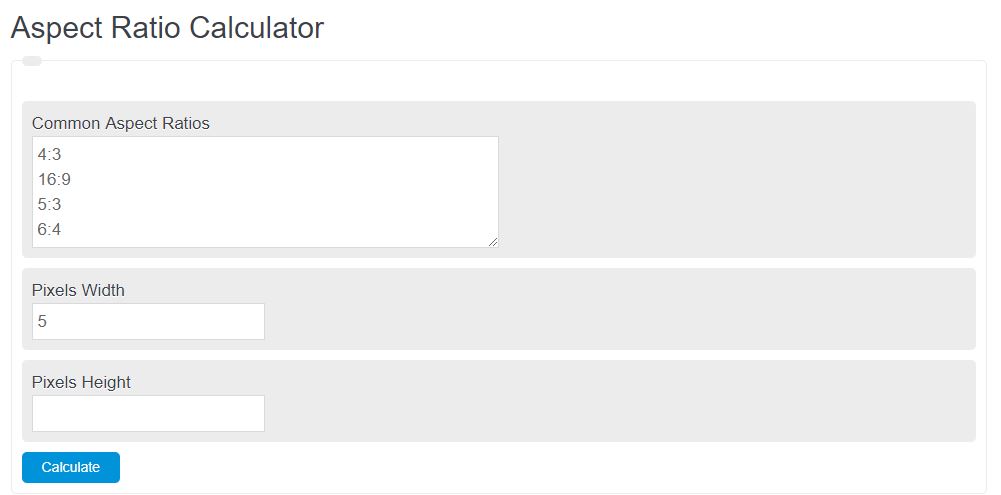

Some of the aspect ratios were chosen to utilize smaller film sizes in order to save film costs while other aspect ratios were chosen to use larger film sizes in order to produce a wider higher resolution image. The goal of these various lenses and aspect ratios was to capture as much of the frame as possible, onto as large an area of the film as possible, in order to fully utilize the film being used. The "flat" 1.85:1 aspect ratio was introduced in May 1953, and became one of the most common cinema projection standards in the U.S. Hollywood responded by creating a large number of wide-screen formats: CinemaScope (up to 2.
PHOTOGRAPHY ASPECT RATIO CALCULATOR MOVIE
3:1, became a perceived threat to movie studios. During that time, television, which had a similar aspect ratio of 1. The "Academy ratio" of 1.375:1 was used for all cinema films in the sound era until 1953 (with the release of George Stevens' Shane in 1. In American cinemas, the common projection ratios are 1.85:1 and 2.39:1. This aspect ratio of 2.39:1 was confirmed by the most recent revision from August 1993 (SMPTE 195-1993).

PHOTOGRAPHY ASPECT RATIO CALCULATOR UPDATE
An update in 1970 (PH22.106-1971) changed the aspect ratio to 2.39:1 in order to make splices less noticeable. A SMPTE specification for anamorphic projection from 1957 (PH22.106-1957) finally standardized the aperture to 2.35:1. After 1952, a number of aspect ratios were experimented with for anamorphic productions, including 2.66:1 and 2.55:1. The motion picture industry convention assigns a value of 1.0 to the image's height an anamorphic frame (since 1970, 2.39:1) is often incorrectly described (rounded) as 2.40:1 or 2.40 ("two-four-oh"). With a space designated for the standard optical soundtrack, and the frame size reduced to maintain an image that is wider than tall, this resulted in the Academy aperture of 22 mm × 16 mm (0.866 in × 0.630 in) or 1.375:1 aspect ratio. The film itself is 35 mm wide (1.38 in), but the area between the perforations is 24.89 mm × 18.67 mm (0.980 in × 0.735 in), leaving the de facto ratio of 4:3, or 1. The universal standard (established by William Dickson and Thomas Edison in 1892) is a frame that is four perforations high. In motion picture formats, the physical size of the film area between the sprocket perforations determines the image's size. With television, DVD and Blu-ray Disc, converting formats of unequal ratios is achieved by enlarging the original image to fill the receiving format's display area and cutting off any excess picture information ( zooming and cropping), by adding horizontal mattes ( letterboxing) or vertical mattes ( pillarboxing) to retain the original format's aspect ratio, by stretching (hence distorting) the image to fill the receiving format's ratio, or by scaling by different factors in both directions, possibly scaling by a different factor in the center and at the edges (as in Wide Zoom mode). Other aspect ratios, such as 5:3, 5:4, and 1:1 (square format), are used in photography as well, particularly in medium format and large format. In still camera photography, the most common aspect ratios are 4:3, 3:2, and more recently found in consumer cameras, 16:9. Other cinema and video aspect ratios exist, but are used infrequently. 7:1), universal for high-definition television and European digital television. 3:1), the universal video format of the 20th century, and 16:9 (1. Two common videographic aspect ratios are 4:3 (1. The most common aspect ratios used today in the presentation of films in cinemas are 1.85:1 and 2.39:1. 8 Previous and currently used aspect ratios.


5 Obtaining height, width, and area of the screen.


 0 kommentar(er)
0 kommentar(er)
